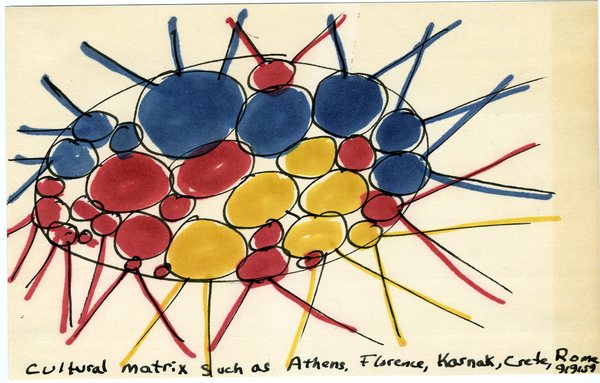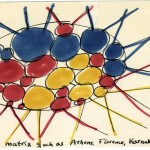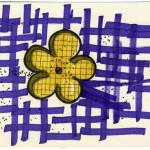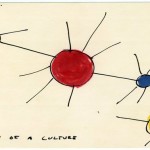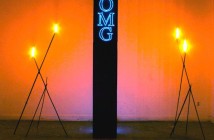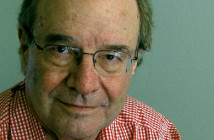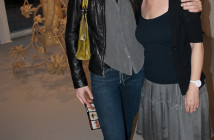INTERVIEW WITH MARY OTIS STEVENS
Local architect Mary Otis Stevens might be known to you, especially residents of Lincoln Massachusetts, for a very particular home built in the 1970s not far away from the famous dwelling of the Bauhaus director, Walter Gropius. The Modernist building, made out of austere concrete, was decidedly at odds with the other homely New England facades. The most baffling aspect of the house was that it had no doors! This seemed to deliberately go against the American standard home, where compartmentalization of space is key: everyone has their own room, their own television, and their own things. Living like this, you would barely bump into the people you lived with. Instead, Otis Steven’s house in Lincoln was the realization of a different way of living. In fact, Otis Stevens and her late husband and architect Thomas McNulty published their theories of their interpretation of Modern Architecture in a treaty called World of Variation.
I first became intrigued by this project haphazardly discovering the original drawings for the book currently housed at the MIT Museum, Cambridge. The World of Variation, published in 1970, is a synthesis of visual language and written text offering a utopian vision of social living going beyond architecture and urban planning. It offers a new language to interpret present and future planning, architectural needs, as well as offering a vision for the future based on freedom of movement, equality, respect, and acceptance. In essence, the book presents a new conception for living.
Almost forty years after the World of Variation was published, Otis Stevens revisited the project in an interview on March 2nd 2009. Below is the transcript of the interview, edited in a style to maintain Otis Stevens first hand account:
-
“I was looking at it today, I hadn’t looked at it in decades, and I was pleasantly surprised by the fact that because the iconography was so abstract – as it was intended to be – it doesn’t become outdated. Reading many parts are like reading anything today, which shows that some things don’t change that much, some things do. The idea of addressing issues in the world goes back to the first architects that we know of: Vitruvius, Alberti […] architects were not just interested in buildings. In fact, what Thomas McNulty and I were interested in was architecture beyond buildings. That’s what World of Variation is about. One of the problems it had with the public, Gyorgy Kepes (founder of the Center for Advanced Visual Studies (CAVS) at MIT), told us directly, is that it didn’t have specific images, like [former MIT professor]Kevin Lynch’s images of the city. San Marco was the leading image – everyone wanted to do a San Marco in the US. But that was a kind of limit – a limited objective – we are not Venetian doges and it doesn’t work. The idea of thinking, and not coming up with a solution: voilà here is a San Marco in Texas – because that’s ridiculous. There is no connection with the place, the time or the type of imagery. What was interesting to me in the 1950s and then at MIT in 1960s was a whole new world, a possibility, Robert Kennedy, the why not? Why can’t we do something different, why do we have to stick to the same parameters?
These were the same questions Arp, the Bauhaus, the Constructivists and Moholy-Nagy were claiming. In all the arts you need a new iconography to express new ideas or new relationships. It’s not the ideas that change; it’s really about the relationships. That’s whatWorld of Variation deals with. For example, by the sketching it’s the movement – how do we move in our cities, and how do you express this. If you want you can show pictures of pedestrians, but that’s limited by the specifics.
In a way the most limiting factor of World of Variation is the cover taken at one of the anti-war marches. That is a dated photograph. We did that because the publisher wanted it to be more marketable. The book has to do with cultural and social movements and challenges. The need for cultural protection is just as much an issue now as it was then.
I think you’ll find in Utopian studies the more specific you get the more base you get. What you’re really getting at is only expressible in other metaphors. When you get too concrete, you lose the meaning and the weight of them just brings them back to earth. Nobody would be so foolish as to build a utopia. You would only want the utopian vision as concept, a new insight, when suddenly you could see the connection that you never saw before. For example, in World of Variation, the sketch of movement and hesitation, which then became a reality in the Lincoln house. This shows how you go from a utopian concept to a reality. That’s why we built the house, to show that you can, but it has to be done in a poetic way, not a literal way. The idea of living was movement and hesitation, a family living in flux to open up new possibilities.
In fact, in World of Variation's preface, we cited ‘I hold nothing that is human is alien to me.’ This was embedded in a tile in Rivello, Italy by Terence, the Roman philosopher. When we found that we thought ‘this is it’: here we were, a family, and we wanted to create a close environment of togetherness and know each other not ceremonially but in all moments. It was not oppressive or coercive. Some could say that it was, because if you were not considerate and did not abide by certain rules of humanity, it could be awful. It was a place of free movement. Living this way, you needed courage to confront one other and respect. At the communal center of this house, at its core, thrived sharing and trust.
The method to communicating words with images took a while to establish. It took ten years to write this book. Thomas McNulty grew up from Ohio from a poor Irish family. I came from the East coast, from a more affluent family and a liberal arts background. We both came towards this visual language to express these concepts. So we connected. We were making these experiments on our own and then did projects together, collecting these ideas, which we finally decided to put together in a book. We wrote it in Ravello, Italy in 1961-1962 but it wasn’t until seven years later that it got published.
We were mulling over the problem, how do you connect the word and the image without one fighting over the other. What became very apparent to us is that you don’t want to have a literal image, for example San Marco, because then the focus is on that particular object and you get too detailed. On the other hand if you wrote a treatise, with foot notes and all the rest of it, you could also kill it. This is what we thought worked. We were trying to attach ourselves as much as possible to what existed, without the look at me but trying to communicate something that is very deep and you want to get it our as honestly and purely. It doesn’t read like a book but like a collection of insights. You can dip in and out. In a way, the medieval books are like that, they communicate without the necessity of reading.
When World of Variation was written, we wanted the architects and artists to start communicating; we would go to each other’s studios and make big drawings. Art was a vitality, art mattered. Art was a way of communicating, just as science is a way of communicating. Both of them use symbols. It is a way of communicating without words and without realistic pictures. What is important is to see how we can use all the languages. We need the mathematics; the sciences, and we need the art, too. Art can open up relationships that other things may not do at all.
Why should an architect or an artist think that if they create, why is that relevant, why is it going to communicate. That is the question. Many critics might think it doesn’t mean anything. But the answer is simply because it does. Picasso and Giacometti, Matisse others when they saw African art, they understood it, understood what it communicated. For example the [Russian] Icon Museum in Clinton, Massachusetts, and those icons – the question becomes foolish. The answer is that images communicate because we’re humans. You know it happens, just the way we eat and breathe – it’s part of our humanness. We do somehow respond to visual imagery and it makes connections in our brains. When we know more about the brain they will be able to understand the scientific process. Until then, we know that it works, just like the law of gravity – it was working even before Newton came along.
The World of Variation was our response to a world that is relevant even today. Technocracy is not only possible, it has happened. Look at Manhattan. We didn’t succeed with the American public of the time, but if people become interested again with some of these images, this book might help. My hope is that this book will continue to be readable.”
-
At its core, World of Variation is advocating for exactly what the title spells out – a world of variation, of variability, because only through variation can there be change. It is not championing a world of uniform material and social equality, as movement is unavoidable in a post technological society because it is programmed to constantly change. However, critiquing today’s tendency for evolutionary perfection inevitably screens out all choices except those leading to a greater accuracy and control – leading to repetition without improvement. Variety is necessary and essential for a constructive organic evolution.
World of Variation by Mary Otis Stevens and Thomas McNulty can still be found online on obscure websites. Hopefully in the future there will be a reprinting as the language and what it communicates is valuable to all aspiring architects and artists, to take a fresh look at the world around us and inspire us to make a difference.
- Mary Otis Stevens, Cultural Matrix from World of Variation, 1959
- Mary Otis Stevens, Cultural Protection from World of Variation, 1957
- Mary Otis Stevens, Timescale from World of Variation, 1957
MIT School of Architecture & Planning
All images are courtesy of the MIT museum.

